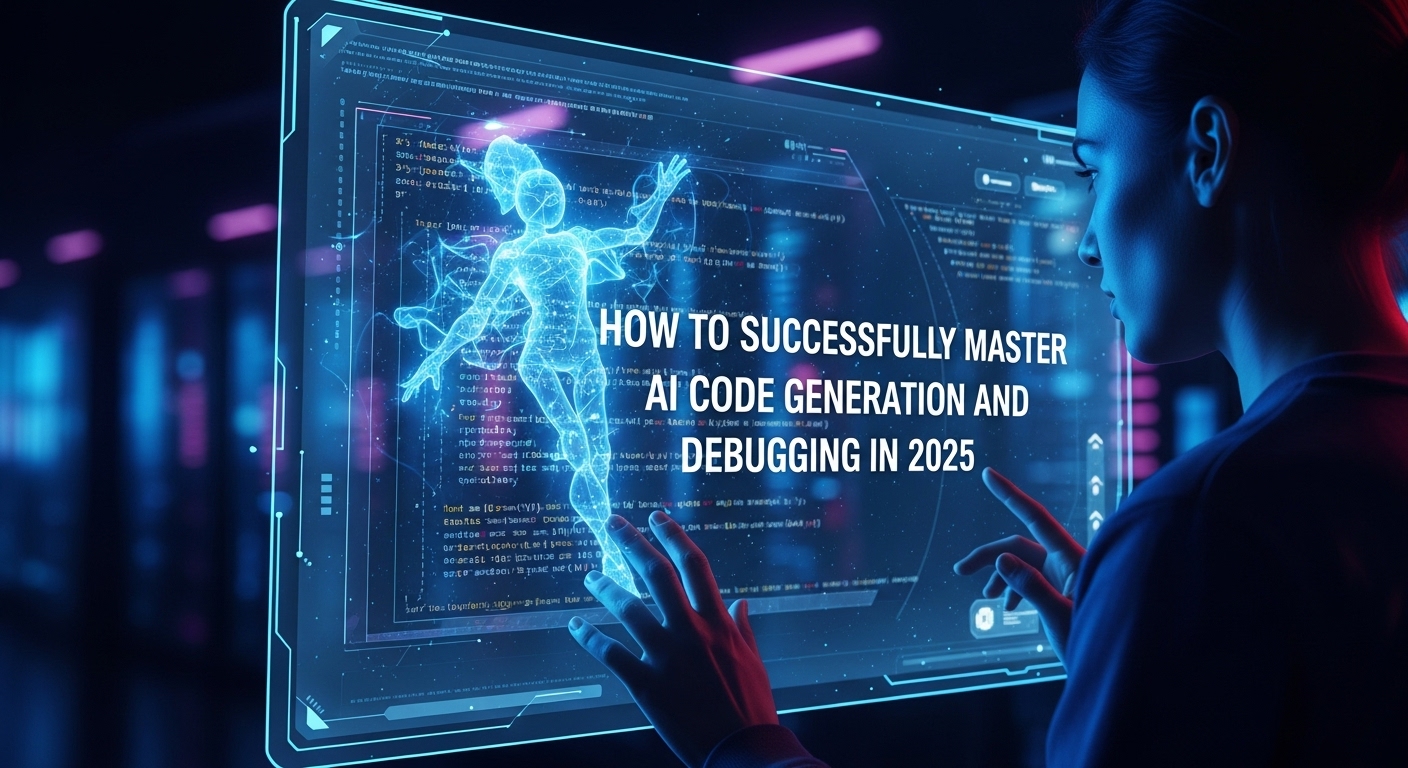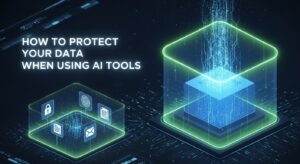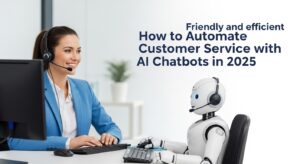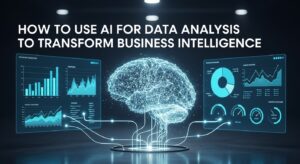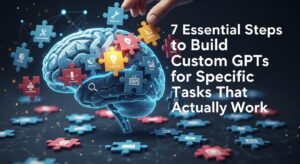AI code generation has revolutionized software development, transforming how developers write, test, and debug code. Whether you’re a beginner learning your first programming language or an experienced developer looking to boost productivity, understanding how to effectively leverage AI tools can dramatically improve your coding workflow.
This comprehensive guide explores practical strategies, real-world applications, and proven techniques for using AI in both code generation and debugging processes.
What Is AI Code Generation?
AI code generation refers to the process of using artificial intelligence models to automatically create programming code based on natural language descriptions, existing code patterns, or specific requirements. Modern AI systems can understand context, programming languages, and best practices to generate functional, efficient code snippets or entire programs.
Key Benefits of AI Code Generation
- Increased Productivity: Generate boilerplate code instantly
- Reduced Learning Curve: Access syntax and patterns for unfamiliar languages
- Consistent Code Quality: Follow established conventions and best practices
- Faster Prototyping: Quickly test ideas and concepts
7 Powerful Ways to Use AI for Code Generation
1. Natural Language to Code Translation
The most intuitive approach to AI code generation involves describing your requirements in plain English. AI models excel at translating natural language specifications into functional code.
Example Applications:
- “Create a function that validates email addresses”
- “Generate a REST API endpoint for user authentication”
- “Write a sorting algorithm for a list of objects”
2. Code Completion and Suggestions
Modern AI tools provide intelligent code completion that goes beyond simple keyword matching. They understand context, variable names, and function signatures to suggest relevant completions.
Best Practices:
- Write descriptive variable and function names
- Provide clear comments to guide AI suggestions
- Review suggestions before accepting them
3. Template and Boilerplate Generation
AI excels at generating repetitive code structures, saving significant development time on routine tasks.
Common Use Cases:
Template Type | Time Saved | Accuracy |
Database Models | 70% | 85% |
API Controllers | 60% | 80% |
Test Cases | 80% | 90% |
Configuration Files | 90% | 95% |
4. Cross-Language Code Translation
AI code generation tools can translate code between different programming languages, helping developers work across multiple technology stacks.
Popular translation pairs include:
- Python to JavaScript
- Java to C#
- SQL to NoSQL queries
- Legacy code to modern frameworks
5. Documentation Generation
AI can automatically generate comprehensive documentation from your code, including:
- Function descriptions
- Parameter explanations
- Usage examples
- API documentation
6. Code Refactoring Suggestions
AI tools analyze existing code and suggest improvements for:
- Performance optimization
- Readability enhancement
- Security vulnerability fixes
- Design pattern implementation
7. Test Case Generation
Automated test generation using AI code generation ensures comprehensive coverage and reduces manual testing effort.
Mastering AI for Code Debugging
Understanding AI-Powered Debugging
AI debugging tools go beyond traditional debuggers by providing intelligent analysis, pattern recognition, and contextual suggestions for fixing issues.
5 Essential AI Debugging Techniques
1. Error Pattern Recognition
AI systems learn from vast code repositories to identify common error patterns and suggest fixes. They can recognize:
- Syntax errors with context-aware corrections
- Logic errors based on code flow analysis
- Performance bottlenecks through pattern matching
2. Intelligent Stack Trace Analysis
When your application crashes, AI tools can analyze stack traces and provide:
- Root cause identification
- Similar issue references
- Step-by-step fixing guidance
3. Code Quality Assessment
AI debugging includes proactive quality assessment:
- Code smell detection
- Security vulnerability scanning
- Performance impact analysis
- Maintainability scoring
4. Automated Bug Reproduction
Advanced AI debugging tools can automatically create minimal test cases that reproduce reported bugs, making debugging more efficient.
5. Context-Aware Suggestions
AI understands your codebase context and provides relevant suggestions based on:
- Project architecture patterns
- Existing code conventions
- Third-party library usage
- Framework-specific best practices
Popular AI Code Generation Tools
GitHub Copilot
- Best For: Real-time code suggestions
- Languages: 30+ programming languages
- Integration: VS Code, Visual Studio, JetBrains IDEs
- Learn more: GitHub Copilot Official Site
OpenAI Codex
- Best For: Complex code generation tasks
- Strengths: Natural language understanding
- API Access: Available through OpenAI platform
- Documentation: OpenAI Codex Guide
Amazon CodeWhisperer
- Best For: AWS-integrated development
- Security: Built-in security scanning
- Pricing: Free tier available
- Integration: Multiple IDEs supported
TabNine
- Best For: Team collaboration
- Privacy: On-premise deployment options
- Customization: Team-specific training
- Learn more: TabNine Features
Best Practices for AI Code Generation
1. Start with Clear Requirements
Before using AI code generation, clearly define:
- Functional requirements
- Performance expectations
- Technology constraints
- Security considerations
2. Review and Understand Generated Code
Never blindly accept AI-generated code. Always:
- Read through the generated code
- Understand the logic and approach
- Test thoroughly in your environment
- Verify security implications
3. Iterative Refinement
Use an iterative approach:
- Generate initial code
- Test and identify issues
- Refine requirements
- Regenerate improved version
- Repeat until satisfied
4. Combine AI with Human Expertise
AI code generation works best when combined with human judgment:
- Use AI for rapid prototyping
- Apply human review for critical logic
- Leverage AI for routine tasks
- Rely on experience for architectural decisions
Common Challenges and Solutions
- Code Quality Consistency: Establish clear coding standards and review AI suggestions against these standards.
- Security Vulnerabilities: Always run security scans on AI-generated code and follow security best practices.
- Over-Dependence on AI: Maintain programming fundamentals and use AI as an enhancement tool, not a replacement.
- Context Limitations: Provide comprehensive context and break complex tasks into smaller, manageable pieces.
Measuring Success with AI Code Generation
Track these metrics to evaluate your AI code generation effectiveness:
Productivity Metrics
- Lines of code generated per hour
- Time saved on routine tasks
- Reduced development cycles
- Faster feature delivery
Quality Metrics
- Bug reduction rates
- Code review feedback improvement
- Test coverage increases
- Performance optimization gains
Learning Metrics
- New language adoption speed
- Framework familiarity improvement
- Best practice implementation
- Team knowledge sharing
Future of AI in Software Development
The evolution of AI code generation continues with emerging trends:
Upcoming Innovations
- Advanced Context Understanding: Better comprehension of large codebases
- Multi-Modal Generation: Integration of visual and textual inputs
- Specialized Models: Industry-specific AI tools
- Enhanced Collaboration: AI-human pair programming
Preparing for the Future
- Stay updated with AI tool developments
- Continuously refine your AI usage skills
- Participate in AI coding communities
- Experiment with new AI technologies
Getting Started: Your AI Code Generation Journey
Week 1: Foundation Building
- Choose your first AI coding tool
- Install and configure in your IDE
- Generate simple code snippets
- Review and understand outputs
Week 2: Practical Application
- Use AI for debugging existing projects
- Generate test cases for current code
- Experiment with documentation generation
- Practice natural language to code translation
Week 3: Advanced Techniques
- Try cross-language code translation
- Use AI for code refactoring
- Implement AI-suggested optimizations
- Share learnings with your team
Week 4: Integration and Optimization
- Establish team guidelines for AI usage
- Integrate AI tools into CI/CD pipeline
- Measure productivity improvements
- Plan for expanded AI adoption
Conclusion
AI code generation and debugging represent a paradigm shift in software development. By understanding the capabilities, limitations, and best practices outlined in this guide, you can harness AI’s power to become a more productive and effective developer.
Remember that AI tools are meant to augment human creativity and expertise, not replace them. The most successful developers will be those who learn to collaborate effectively with AI while maintaining their fundamental programming skills and critical thinking abilities.
Start small, experiment freely, and gradually integrate AI tools into your development workflow. The future of coding is here, and it’s powered by the intelligent collaboration between human creativity and artificial intelligence.
Ready to transform your coding workflow? Begin your AI code generation journey today by selecting an AI tool that matches your development environment and experimenting with the techniques covered in this guide.

